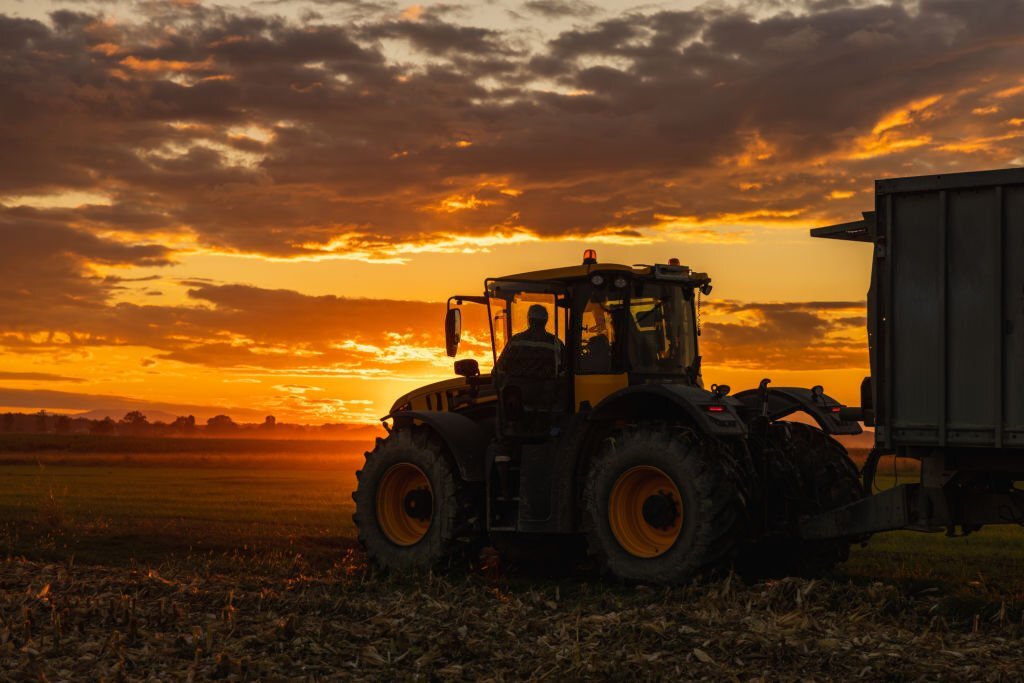
Introduction:
In the intricate web of heavy equipment operations, tractors stand as indispensable workhorses, driving efficiency across diverse industries. However, the use of tractors in these operations comes with a responsibility to adhere to stringent regulations and standards. In this article, we unravel the intricate tapestry of guidelines governing tractors in heavy equipment operations, ensuring a nuanced understanding of safety, environmental impact, and industry-specific compliance.
Occupational Safety and Health Administration (OSHA) Standards:

- At the forefront of ensuring workplace safety, OSHA mandates standards specific to tractors in heavy equipment operations. These standards encompass critical aspects such as rollover protection structures (ROPS), operator training, and overall safety practices. Compliance with OSHA standards is not merely a legal obligation but a commitment to fostering a secure work environment.
The Occupational Safety and Health Administration (OSHA) is a federal agency within the United States Department of Labor. OSHA’s primary mission is to ensure safe and healthy working conditions for employees by enforcing standards and regulations. OSHA standards are a set of guidelines and rules that employers must follow to maintain a safe workplace. These standards cover various industries and address specific hazards and risks associated with different types of work.
Key components of OSHA standards include:
- General Industry Standards:
- OSHA has established standards that apply to a wide range of industries, including manufacturing, healthcare, construction, and more. These standards cover topics such as hazard communication, machine guarding, respiratory protection, and electrical safety.
- Construction Standards:
- OSHA has specific standards tailored to the construction industry, recognizing the unique hazards and risks associated with construction work. Construction standards cover areas like fall protection, scaffolding, excavation, and electrical safety on construction sites.
- Maritime Standards:
- OSHA also has standards for the maritime industry, addressing safety concerns related to shipyards, longshoring, and marine terminals. These standards include requirements for personal protective equipment (PPE), machine guarding, and hazard communication.
- Agriculture Standards:
- The agricultural sector has its own set of OSHA standards that focus on the unique challenges of farming and related activities. These standards cover areas such as tractor safety, grain handling, and pesticide exposure.
- Hazard-Specific Standards:
- OSHA has standards that address specific hazards, such as those related to exposure to hazardous chemicals (Hazard Communication Standard), bloodborne pathogens, confined spaces, and more. These standards provide guidelines for employers to protect workers from specific workplace dangers.
It’s important for employers to stay informed about OSHA standards relevant to their industry and ensure compliance to create a safe and healthy work environment. Non-compliance can result in legal consequences and, more importantly, an increased risk of workplace accidents and injuries.
American National Standards Institute (ANSI):

- ANSI, a stalwart in standards development, plays a pivotal role in shaping guidelines for tractor safety. ANSI/SAE J2194 delineates safety standards for agricultural and forestry tractors, covering visibility, operator restraint systems, and equipment guarding. Adhering to ANSI standards signifies a dedication to excellence and safety in tractor design and manufacturing.
The American National Standards Institute (ANSI) is a non-profit organization that facilitates the development of voluntary consensus standards in the United States. Established in 1918, ANSI oversees the collaborative process involving stakeholders from industry, government, and academia to create standards for products, services, processes, and systems. These standards, developed through consensus, serve as benchmarks for quality, safety, and interoperability. ANSI also provides accreditation services to standards development organizations and conformity assessment bodies, ensuring they meet specific criteria for competence and impartiality. As the U.S. representative to international standardization bodies like ISO and IEC, ANSI fosters global collaboration. The organization’s role in coordinating, approving, and promoting standards enhances the competitiveness, efficiency, and safety of industries while facilitating international harmonization.
International Organization for Standardization (ISO):

- On the global stage, ISO sets international standards for tractor testing (ISO 3339). These standards encompass performance and safety criteria, fostering a consistent approach to tractor design and functionality worldwide. Compliance with ISO standards not only ensures quality but also facilitates interoperability in a global market.
The International Organization for Standardization (ISO) is a non-governmental international body that develops and publishes standards to ensure the quality, safety, and efficiency of products, services, and systems across various industries. Founded in 1947, ISO is headquartered in Geneva, Switzerland, and comprises member bodies from over 160 countries.
ISO standards are consensus-based and created through a collaborative process involving experts, industry representatives, government officials, and other stakeholders. These standards cover a wide range of fields, including technology, healthcare, agriculture, and manufacturing. ISO’s mission is to facilitate international trade by providing a common language and set of standards that businesses and organizations worldwide can adhere to.
ISO standards offer a multitude of benefits. They enhance product quality, improve safety, and promote interoperability, fostering innovation and efficiency. ISO standards also address environmental and social responsibilities, aligning with global sustainability goals. Notable ISO standards include the ISO 9000 series for quality management, ISO 14001 for environmental management, and ISO 27001 for information security.
Environmental Protection Agency (EPA) Emission Standards:

- Recognizing the environmental impact of heavy equipment operations, the EPA imposes emission standards for tractors. These regulations limit pollutants released by tractor engines, contributing to environmental sustainability. Complying with EPA emission standards is a testament to a commitment to reducing the ecological footprint.
The Environmental Protection Agency (EPA) emission standards are regulations established by the United States Environmental Protection Agency to limit the release of pollutants into the air from various sources, including vehicles, industrial facilities, and power plants. These standards play a crucial role in protecting air quality, public health, and the environment by setting specific limits on the amount of certain pollutants that can be emitted.
Key features of EPA emission standards include:
- Tailpipe Emission Standards for Vehicles:
- The EPA sets emission standards for various pollutants emitted from the tailpipes of vehicles, including carbon monoxide (CO), nitrogen oxides (NOx), particulate matter (PM), and volatile organic compounds (VOCs). These standards apply to both light-duty and heavy-duty vehicles and are designed to promote cleaner and more fuel-efficient transportation.
- Industrial Emission Standards:
- For industrial facilities, the EPA establishes emission standards for specific pollutants, such as sulfur dioxide (SO2), nitrogen dioxide (NO2), particulate matter, and hazardous air pollutants. These standards vary by industry and are designed to control and reduce harmful emissions from manufacturing and industrial processes.
- Power Plant Emission Standards:
- The EPA sets emission standards for power plants to limit the release of pollutants like sulfur dioxide, nitrogen oxides, mercury, and other hazardous air pollutants. These standards are aimed at reducing the environmental impact of power generation and promoting the transition to cleaner energy sources.
- Renewable Fuel Standards:
- The EPA also establishes standards for the renewable content of transportation fuels, such as ethanol and biodiesel. These standards, known as the Renewable Fuel Standard (RFS), promote the use of renewable fuels to reduce greenhouse gas emissions and dependence on fossil fuels.
- Greenhouse Gas Emission Standards:
- In response to climate change concerns, the EPA has introduced regulations targeting greenhouse gas emissions. These standards aim to limit the release of carbon dioxide (CO2) and other greenhouse gases from various sources, including power plants and vehicles.
EPA emission standards are dynamic and are periodically updated to reflect advancements in technology, scientific understanding, and environmental goals. The standards contribute to the overall effort to improve air quality, mitigate climate change, and protect public health and the environment.
National Institute for Occupational Safety and Health (NIOSH) Recommendations:
- NIOSH provides invaluable recommendations to enhance tractor safety, particularly in the agricultural sector. These guidelines span tractor design, visibility, and injury prevention, contributing to an elevated safety culture in heavy equipment operations.
State and Local Regulations:
- Beyond federal standards, individual states and local jurisdictions may introduce specific regulations for tractors in heavy equipment operations. A comprehensive understanding of regional regulations is essential to ensure legal and safe practices.
Industry-Specific Standards:
- Tailoring regulations to specific industries, such as construction or agriculture, and industry-specific standards address unique challenges and requirements. Adhering to these standards ensures operations align with the nuances of the particular sector.
Conclusion:
- Navigating the regulatory landscape for tractors in heavy equipment operations demands a meticulous approach. By embracing and exceeding standards set by OSHA, ANSI, ISO, EPA, and others, organizations not only meet legal requirements but foster a culture of safety, environmental responsibility, and excellence in heavy equipment operations. In the dynamic intersection of compliance and innovation, tractors emerge not just as machines but as integral contributors to a safer, more sustainable future.

